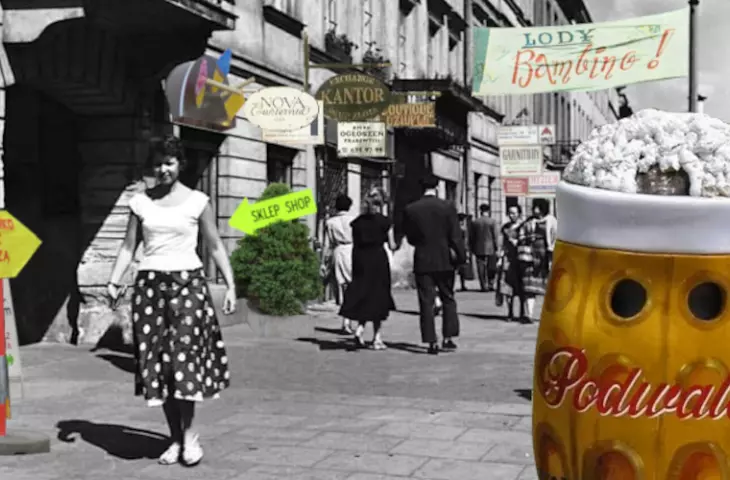The historic center of the capital will get regulations to help control the visual chaos. In anticipation of the landscape resolution, the city authorities have announced the introduction of a cultural park—a tool that has been successfully operating for years in Krakow or Wroclaw. However, the boundaries of the area designated for protection seem to be accidental.
There are as many as 41 cultural parks in Poland, the purpose and function of which sometimes vary greatly. The Klasztorny Ponds Park in Slupsk creates a new recreational space for residents in a historic location. Among other things, the purpose of establishing a cultural park of the Ashes Heap in Tarnowskie Góry is to protect a unique ecosystem. The park of the Warmian Scenic Road has blocked the cutting of valuable trees along the road leading to the village of Gietrzwałd. Regulations also protect the Zakopane Basin from sprawling development, and in Cracow, regulations introduced in as many as three districts (Old Town, Podgórze and Nowa Huta) counteract advertising clutter. Warsaw joined the ranks of local governments using this tool in 2012 with the establishment of the Wilanów Cultural Park covering the surroundings of the Wilanów Palace.
Map of cultural parks in Poland
© UM Warsaw
Protracted work on a landscape resolution for Warsaw makes the cultural park the only chance to at least partially control the chaos that has flooded downtown streets. We are talking about signs, advertisements, street trading and other forms of unregulated activity.
The cultural park is a tool to prevent spatial chaos, illegal advertising and trashy street stands. The Historic Cultural Center is to encompass the Old and New Towns, the Royal Route, the area from Krasinski Gardens to Saski Park, and the parks below the Skarpa, including Łazienki Park. It is extremely important that these representative places be protected. The draft resolution has been awaiting the opinion of the Mazovian Regional Monuments Conservator since last year," says Deputy Mayor Renata Kaznowska.
The provisions being prepared by the capital's City Hall organize matters related to the aesthetics of the facade, protection of original architectural detail and historic woodwork. The park will regulate the placement of technical equipment. Much attention is paid to the protection of tree stands and urban green areas. Regulations on advertising media are a simplified version of the landscape resolution. For the Old and New Towns, a couple of additional rules will be introduced to adapt advertising to the scale and specifics of the Old Town.
© UM Warsaw
The draft resolution to establish the park has been ready since last year. It is currently waiting for an opinion from the Mazovian Regional Monument Conservator. Once it is obtained, it will be put out for public review. The third and final step will be a vote by city councilors on the resolution establishing a cultural park of the Historic Center of Warsaw.
Looking at the map and the boundaries of the proposed park, it is difficult at first glance to find any logic here. Entire, functionally important and degraded streets (such as Mokotowska and Chmielna) are excluded from the regulation. What's more—the park's boundaries often intersect compact building quarters, making adjacent tenements within a single frontage subject to completely different regulations. Sometimes single buildings on specific streets are excluded from the park's boundaries—as, for example, is the case on al. Szucha, and in the case of Trzech Krzyży Square, the corner tenement at the corner of Hoża and Mokotowska is included in the scope of the study, but the one at the intersection of Żurawia and Bracka is not.
© UM Warszawa
The starting point for determining the boundaries of the valuable cultural landscape of the Historic Center of Warsaw was the Historic Monument of the City Complex with the Royal Route and Wilanow, established in 1994. In a resolution of intent, the Warsaw Council decided to include the Old and New Towns, the urban layouts associated with the Royal Route and the palace and garden complexes located along the Vistula escarpment in the new cultural park.
© UM Warsaw
Minor deviations from the boundaries of the historical monument are to result from the need to protect properties located on both sides of the most important street routes, for example, at Nowy Swiat and Ujazdowskie Avenue. Secondly, the area of the cultural park includes places adjacent to the historical monument, but important in terms of landscape and history, such as areas belonging to the Royal Baths and the Mariensztat Housing Colony. However, it seems that—taking the example of successfully functioning records, such as those in Krakow—it would make the most sense to delineate the park by referring to physical, understandable boundaries such as main arteries and the boundaries of modern quarters.
© UM Warsaw






























